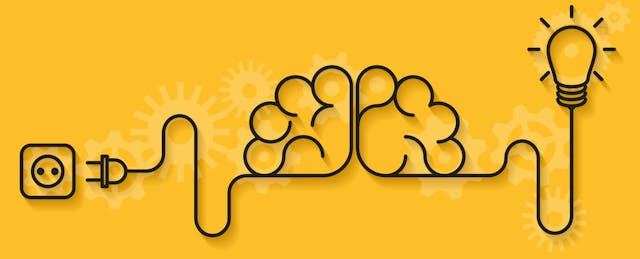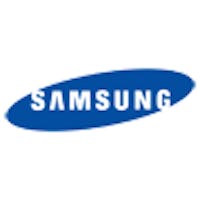Education technology has exploded in the last decade. And with the onset of COVID-19, technology integration in schools has only accelerated. We are not short on technology products or solutions.
Yet, Samsung—long the leader in digital displays—believes that education needs smart and sensible solutions that truly transform teaching and learning. EdSurge recently spoke with Chris Mertens, Samsung’s VP of US Sales, Display Division, about where education technology is heading and how Samsung is working to revolutionize it.
EdSurge: What are the main technology needs that you’re seeing for remote learning right now?
Mertens: First, the pandemic demonstrated the need to push out high-band access to all teachers and learners across the country. Students need to be connected now more than ever. The ability to communicate instantly not only keeps students engaged in the moment, but provides limitless access to knowledge. Then, there is the one-to-one device requirement for all students. This is not a new trend, but it was accelerated due to the pandemic. Placing technology in the hands of our students helps them prepare for today’s lesson and their future tomorrow.
We’re also seeing the need to support teachers and students in a variety of environments, schedules and models of learning. Distance learning became the tipping point to see how we can teach differently. We need to provide the right tools to teachers to be able to adjust their lessons without causing unnecessary stress. Hopefully, this will serve as a new model of how to support all learners better.
How is Samsung addressing the evolving needs of schools?
Schools have known for a long time that we needed a more personalized and technology-based approach. We know we have to keep all students engaged and connected. We’re in the middle of this transformation right now, but there are going to be long-term benefits to this shift. We’re beginning to ask what’s possible, how to approach teaching and learning differently. Just like the disruptions happening in other spaces, we know now that we can think much bigger.
All students need to have the ability to access their teachers and their lessons. Regardless of a student’s technology situation or other particular needs, we have to create multiple ways for them to be successful. We have amazing solutions—like our new Interactive Display and Boxlight MimioConnect bundle—for both synchronous and asynchronous learning. Think: ‘on-demand’ learning. Students can stay on grade level and keep up with lessons at their own pace. Asynchronous learning can actually make studying and retaining curriculum easier for students because it enables them to start and stop lessons, rewind to something they didn’t understand and search for keywords and specific information.
We are creating new and different ways for students to engage with their teachers, peers and the outside world. We are doing this by helping teachers use analytics and actionable intelligence in order to support learners with specific and timely feedback. With MimioConnect, for example, teachers can put out instant polls during lessons, see how much time students are spending on specific tasks and get real-time scores on tests and quizzes. What we are really doing is adjusting and addressing the operational challenges for teachers so they can do what they do best: teach students. It’s really about the right data at the right time in the hands of the right people to produce the right action.

New digital resources are continually coming to the education market. What makes your solutions unique?
We are focused on reducing the administrative burden on teachers and schools. People might think of displays with Samsung, but it's really our ability to customize solutions. We work with an ecosystem of partners to innovate new ways to engage, create new courses and incorporate the likes of robotics and artificial intelligence.
Because we do so much global work outside of education, we don’t see education as limited by boundaries and geography. We are familiar with what’s happening in education and technology in Asia, Europe and all over the world. We see trends across the markets and industries that can bring best practices to US education.
As our students return to campus, communication is the most important. Communication happens everywhere. We can provide communication solutions for every situation, from digital signage to the Samsung Interactive Display. We’ve worked with school districts and organizations like The King’s Academy, Academica and Oak Meadow School to implement comprehensive digital communication solutions that keep students, staff and visitors connected and informed—from the classroom to the athletic fields.
How do you cater to the unique needs and requirements of both IT personnel and student/teacher users?
For IT leaders, our central management is the key. They are looking for ease of operations and ultimately a low cost of ownership. At the end of the day, it’s the deployment that makes or breaks the technology’s successful implementation. This benefits all stakeholders. Whether it’s about instructional options, curriculum choices or communication, we make it easy for everyone to manage and leverage content.
Normally, one would have to invest in five different or disparate systems to do what we do. There is a confidence level that we can provide by teaching one management system to the entire district. Teachers need to maximize learning time, not worry about systems.

Why should school districts invest in this technology right now? What is the long-term ROI?
Hybrid learning isn’t going anywhere. School districts have been talking about hybrid learning for years, but the pandemic drastically accelerated the process. Samsung offers scalable solutions that benefit students now and in the future. For example, if a student is sick or goes on vacation, they can tune into class from anywhere, whether it’s from a bedroom or on the beach. Or, say a student has a doctor appointment during a lesson. They can log on from home during their own time and get back up to speed so they never miss any curriculum. Investing in these technologies now will set students and teachers up for success as education as a whole continues to evolve.



